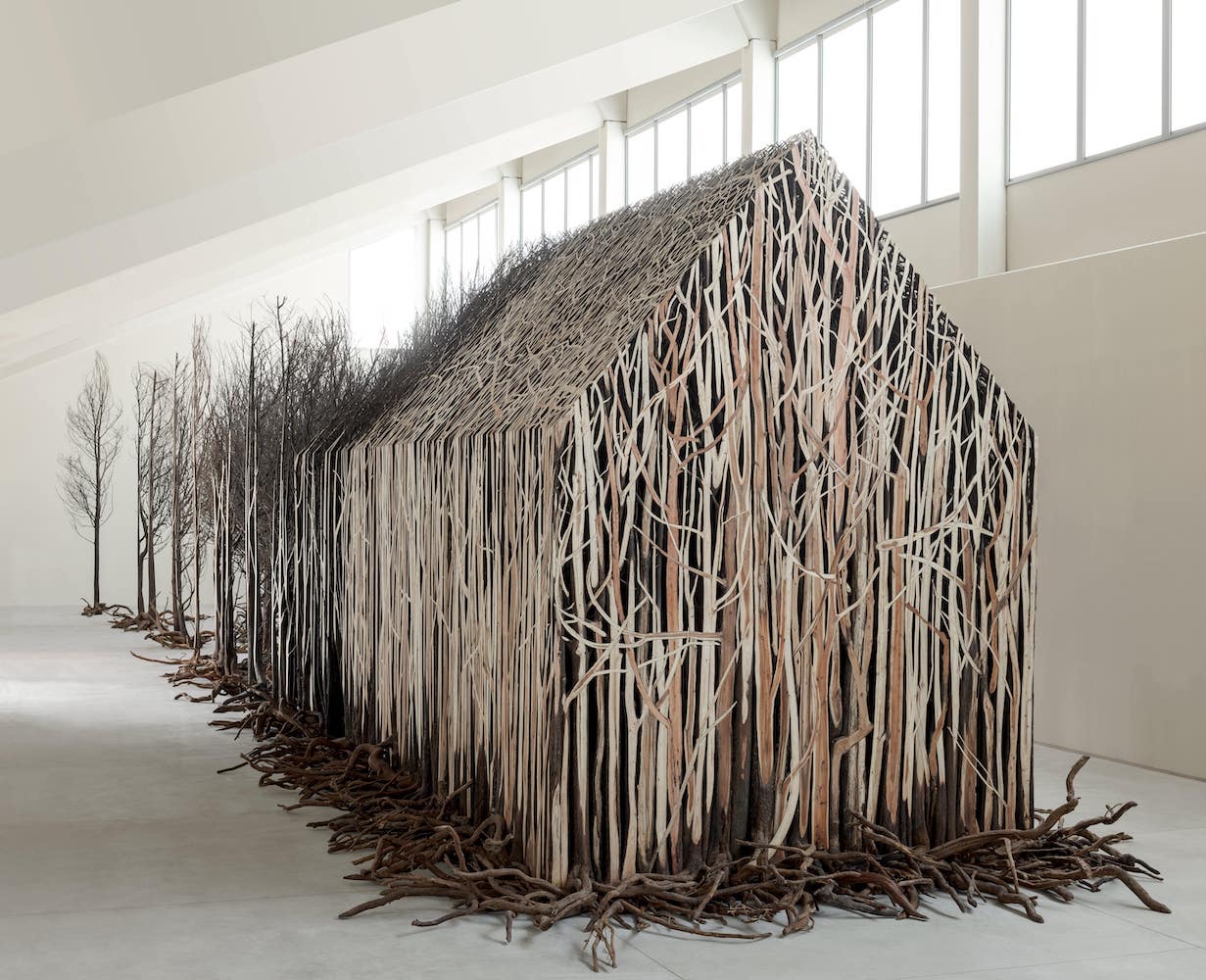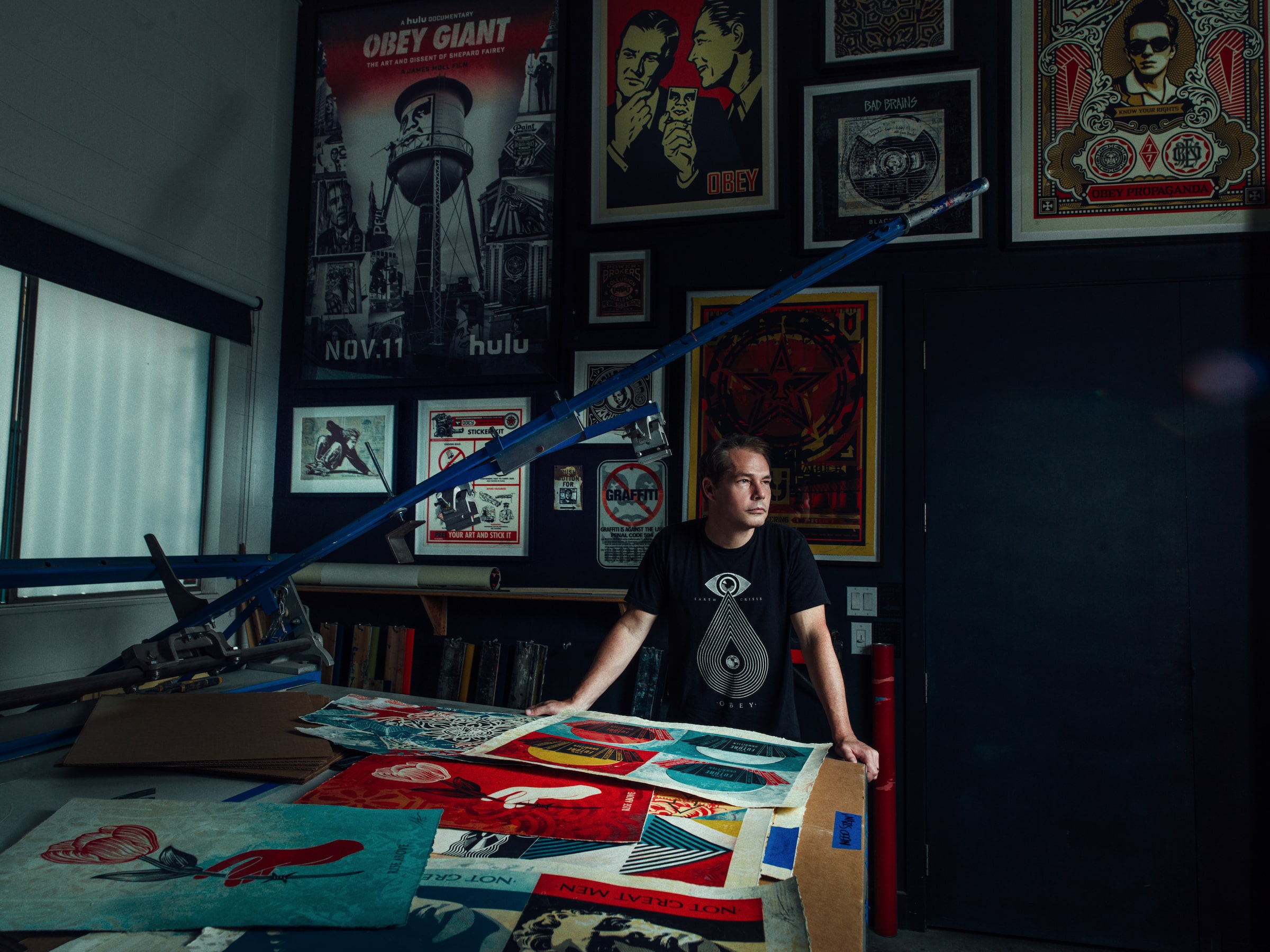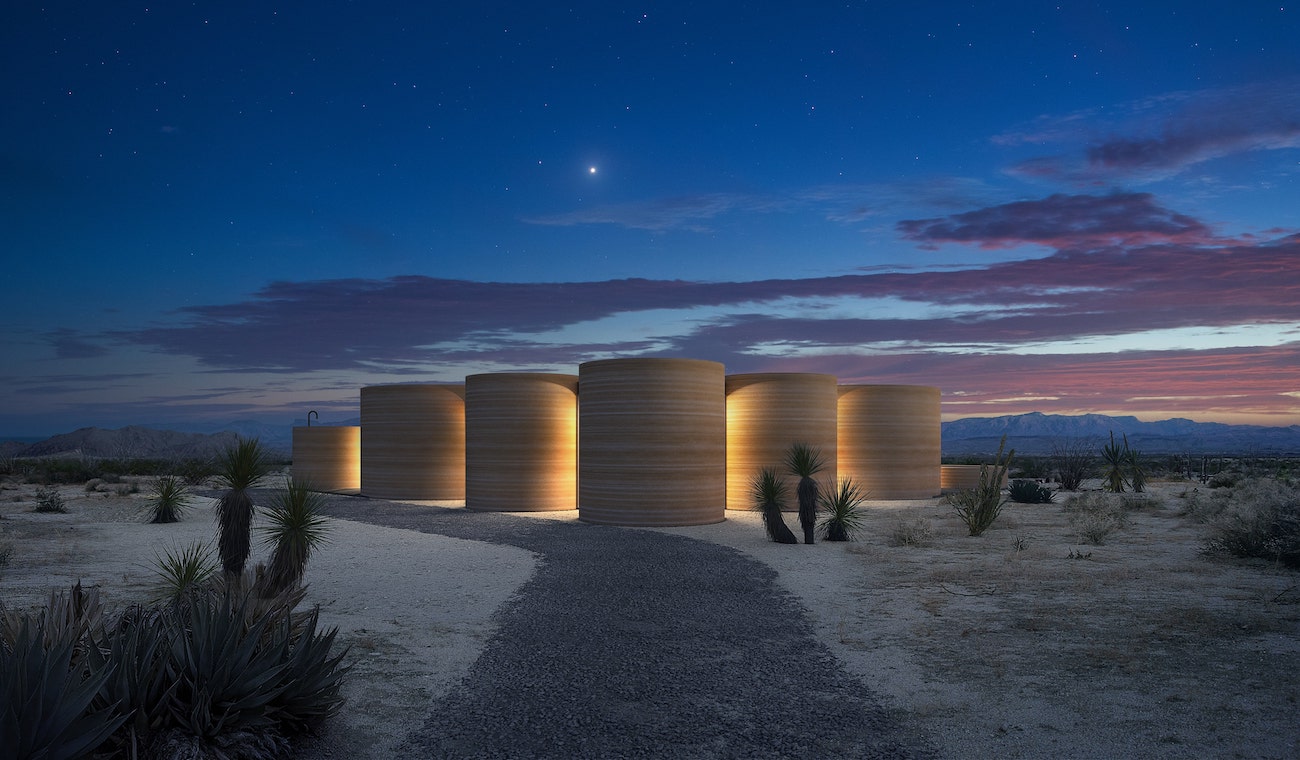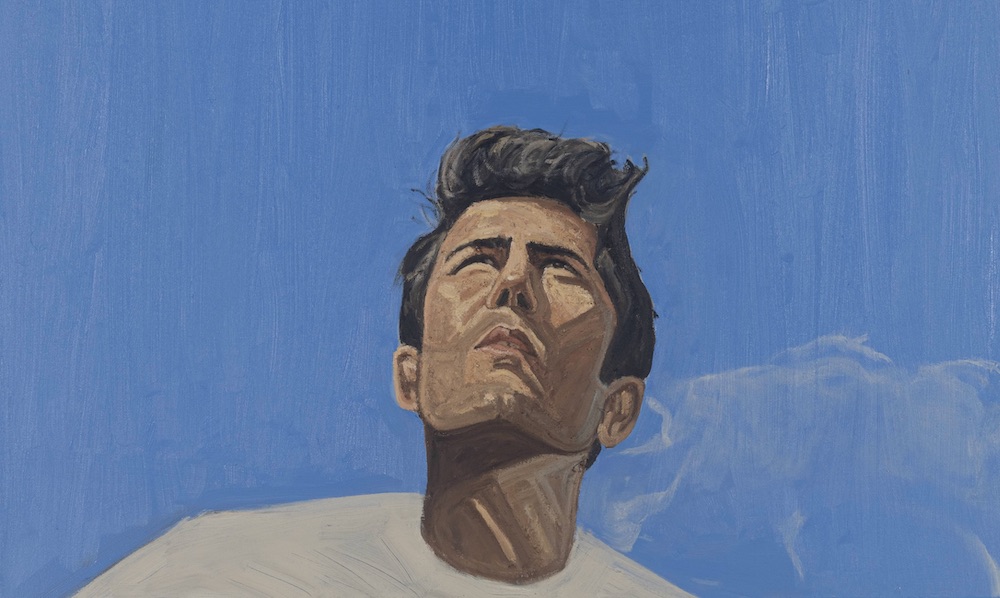How Doris Salcedo is Delivering Dignity Back to Society
This past spring in the United Arab Emirates, a renovated ice factory in Kalba played host to Doris Salcedo’s latest work, Uprooted. Included in the 15th edition of the Sharjah Biennial (February 7–June 11), the installation is made up of 804 dead trees and resembles a burned home. Charred from back to front, the uninhabitable structure emits an eerie ambience, posing questions about who was there and where they went.
This type of contemplation is something Salcedo’s work is known for—inspiring emotions in the viewer related to absence and mourning, and typically tied to global crises like migration and climate change. For Uprooted, the Bogotá-based artist wanted to address uninhabitable spaces that exist around the world, particularly for people migrating to other countries, as well as our ongoing issue with climate change.
Salcedo’s sculptural practice urges us to consider the Global South, and its tragedies tied to topics like drugs, violence, war, or death. For research, she has interviewed countless victims of unimaginable horror, including survivors of political, sexual, and psychological violence. Through these discussions and the work that results, Salcedo provides a space for collective mourning and a sense of dignity for those affected. She speaks to the complex nature of absence in the very place the works are presented, sharpened by a presence of invisibility, loss, and permanence.
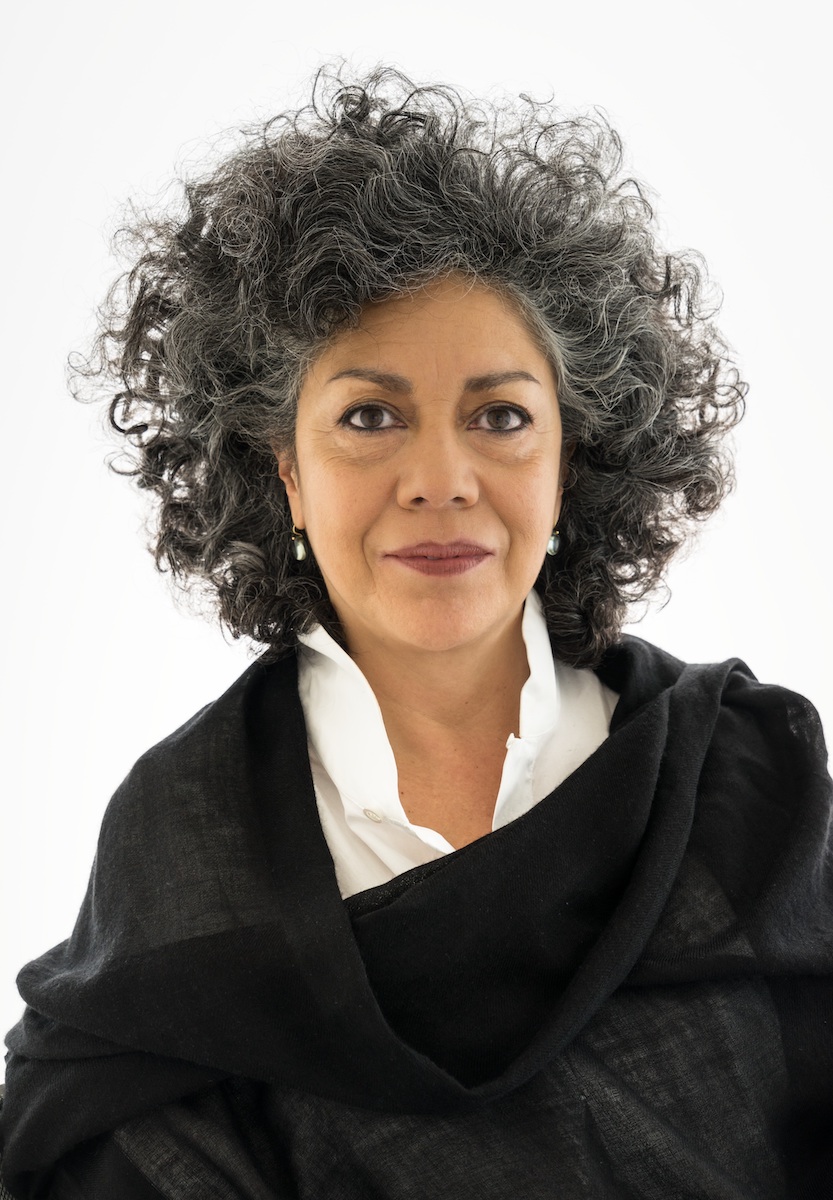
Portrait of Doris Salcedo by David Heald.
Her installation Chairs at the 8th International Istanbul Biennial (2002) included around 1,550 wooden chairs contained between two buildings to address the history of migration and displacement in the Turkish city. Neither (2004) at the Museum of Contemporary Art in Chicago featured wire mesh fencing embedded into the wall of an empty room, depicting the isolating and imprisoning nature of detention centers. Shibboleth (2007) showcased a 167-meter-long crack in the floor of Tate Modern’s Turbine Hall to communicate the severity of separation and borders, and the societal tendency to forget other people’s traumas. At the Guggenheim Museum, Salcedo’s “Disremembered” series (2014) featured sheer silk-like garments as a tribute to American parents who lost their children to gun violence. “Tabula Rasa” (2018), including a series of sculptures presented at White Cube in London, was inspired by her conversations with survivors of sexual violence at the hands of armed men. Her current solo show at Fondation Beyeler (May 21–September 17) is her first museum exhibition in Switzerland, featuring key works from her career, including the large-scale installation Palimpsest (2013–2017) that honored refugees who drowned in the Mediterranean and Atlantic seas.
After visiting her work in the Sharjah Biennial, Whitewall spoke with Salcedo about how her latest works aim to bring dignity back to those who have been wronged. We learned that while she does not make art as a form of activism, she hopes her works are capable of addressing issues to move the needle on thought, emotion, and change.
“I like making art for art’s sake. I don’t consider myself an activist.” — Doris Salcedo
WHITEWALL: Uprooted in this year’s Sharjah Biennial speaks to the violence experienced by migrants, refugees, and displaced people. How did that grow into thinking about everyone in the world losing their home to climate change?
DORIS SALCEDO: I began this piece with the intention to address the fact that there are parts of the world that are already uninhabitable for many people. Those parts of the world are mostly located in the Global South. I was thinking of how countries who experience colonialisms, brutality, imperialism have never had the chance to industrialize, therefore they’re suffering through the climate crisis. Those are areas that are harder hit. They’re the same areas experiencing the largest numbers of migrants. There is food and water scarcity, and it creates political turmoil, so people have to leave their countries. And they die in the process of leaving. That was the beginning of the research. As the piece was taking place, I then realized it was talking widely to all of us. We’re all losing our common home.
I started by thinking about the migrant crisis, but then I realized it’s all of us. We’re all losing our home. It’s an impossible home—a house that cannot be inhabited. It’s made up of 804 trees, and it has three stages. You start by the dead forest, and it starts getting closer and closer together. By the middle of the piece, it forms a thick wall—like the wall that divides the United States and Mexico—and then it gets closer together to create this impossible home.
The destruction of the planet is happening as we are speaking. The condition of the migrants is happening. It is a crisis that will not positively be resolved, and we know that. It’s like a permanent state of crisis, which is what we feel when we read the papers every day.
WW: You mentioned the sculpture took you three years to make and started with a drawing. How was it executed?
DS: It’s a completely handmade sculpture. It was carved, then sculpted. Each tree was cut and transformed to be assembled to the other. It was a large team, about 50 people—carpenters that I hired specifically to make the piece.
WW: Materials have played an important role in the messages that your work carries. What is the role of material in your practice? How do certain materials aid in your communication?
DS: The material itself is essential. I am a sculptor, so I can only try to create an image with materials. It is an absolutely essential part of my work. Once I know which materials I’ll use, the piece is clear in my mind. But that’s the most difficult part, trying to find a material that is capable of addressing the experience I’m trying to work in a specific piece. It’s very difficult, and it’s the most challenging aspect of my practice.
WW: Why in Uprooted were there dead trees? Why not a different material?
DS: It was clear. We are all talking about the climate crisis. We all have that in our minds. It’s our daily intake of sadness, and we know it is happening. We may act like it’s not happening or it’s not that extreme, but we have news, permanently, of things that are happening to people. I think migration and the climate crisis are the most acute issues of our time that define our time. There was no way around it.
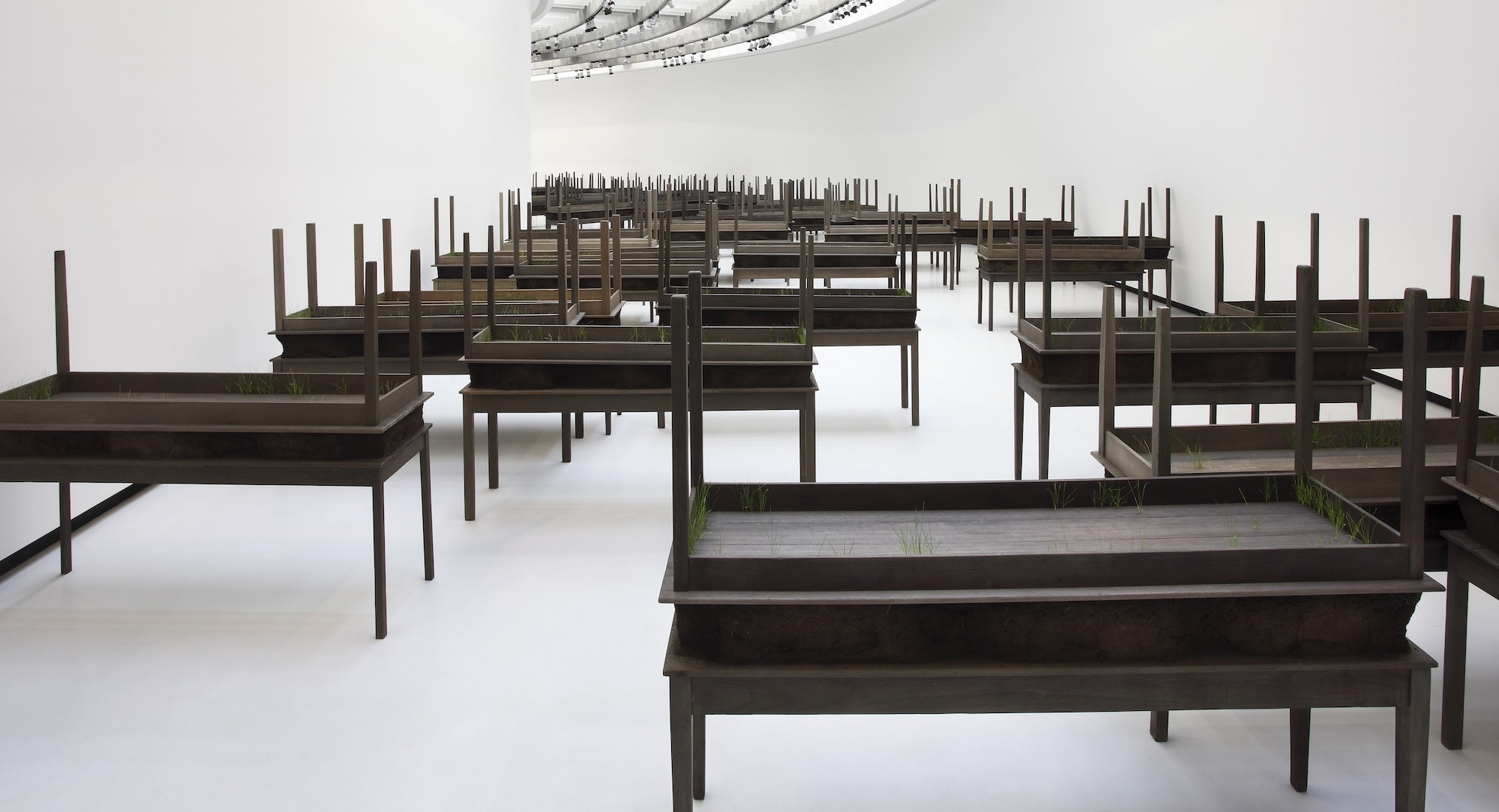
Installation view of Doris Salcedo’s “Plegaria Muda” (2008–10) at Solomon R. Guggenheim Museum, New York (June 26–October 12, 2015), photo by David Heald, courtesy of the artist.
WW: How are you thinking about climate change in relation to your practice?
DS: We all have to be responsible with the kinds of materials we use. I truly think it’s worth creating new and more objects that are not absolutely essential to understand our lives. We have to be more responsible. That’s what it imposes on us.
WW: Does it dictate choices of what you’ll make in the future?
DS: Of course. It entirely defines our world and the future, yes. A few years ago, I managed not to be so clear about that, but once you’re aware, there is no going back.
Doris Salcedo’s Uprooted Addressed Migration in Sharjah
WW: Uprooted is seen in Sharjah, and that is a unique experience for those who are able to see it. Traveling to see it is a privilege, although the city, and the UAE in general, is experiencing a migration crisis like the work talks about. How does this sculpture being based there impact its reach and the connection to the local community?
DS: I wanted to bring a piece to Sharjah that is capable of addressing a problem that I saw in Sharjah. Of course, migration is a very difficult issue over there. The system they have, the difficulty of ever becoming a citizen, the fact that they are paying what they are in the local communities. . . There are a lot of things that are entirely unfair and difficult. But is it better in the United States? Are they treated better in Europe? I think it’s hypocritical of the West to target and finger-point certain countries because of the way we treat migrants. I’m not saying it’s not horrible—it’s absolutely horrendous. But it’s also absolutely horrendous to see the way migrants are dying and are killed in agricultural areas in the south of Italy, for example, or in the U.S. in California meatpacking facilities. The tragedy of migrants is happening all over the world, and it’s equally brutal.
I think it’s hypocritical to single out one experience as being worse than the other. It’s all equally as horrifying, and I don’t think there is a place that we can say that we treat migrants well. In my country, Colombia, we have approximately three million Venezuelan migrants— and they endure the worst. They’re really suffering. And even though we have the same language, same culture, they suffer like crazy here. In the entire world, we are horrible to the foreigner. That’s universal, unfortunately. We mistreat migrants everywhere.
WW: What research went into Uprooted?
DS: I was studying a lot, a lot, a lot about climate crisis. There are plenty of books and articles on the great climate migrations. And I read a lot of books on migration and on the brutality of the conditions of the world. In this case, because it was 2020 and we were in lockdown, I didn’t interview anyone for this piece because it was impossible. But reading was essential. Every time I want to start a piece, I need to be a different person. I need to do a lot of reading to understand something that I didn’t before, and to be able to step in a different place to have a different perspective on the issues. So, I see my work, in a way, as a collective work, because I need the ideas, the experiences, of other people—of migrants.
I was reading interviews with migrants, although I wasn’t interviewing myself, spending a lot of time seeing hundreds and hundreds and hundreds of images of refugee camps. There’s a lot of information on the Internet. So seeing all these tents by the UN, and the migrants there, was essential. The dimensions—350 by 450—was a standard size for a tent that the United Nations would give to a large family in some refugee camps. It was absolutely fascinating to see how people transform those houses, and how there were even gardens planted in the middle of the desert. That was very important, because that was an act of people acquiring dignity through aesthetics. It was essential to me.
WW: How has living in Colombia impacted your practice?
DS: It has been absolutely defining. Being in Colombia makes you aware of the consequences of violence on a daily basis. There’s no escaping what is happening around you, and the horror that takes place is so visible and so prevalent that it’s a catastrophe with no end. It taught me a lot, because in tragedy there are life experiences that are very intense. It’s a condensed capsule of experience. It forced me to be critical—always, always, always. It taught me not to believe what I’ve been told. To hope for something better because what I had around me was never good enough. And pain makes you grow, in a way. It makes you understand that you need to develop some empathy and solidarity. And that what you need as an artist is needed. It’s not superfluous. It’s not something society can go about without. It’s not just your personal intake of the world, but it is being in the world with others. With all these victims. And you learn so much from them. It’s an extraordinary lesson. It’s been painful, but it’s been very important. I wish it weren’t, of course. It would be wonderful if we had a better situation. There’s no clear line of improvement. But I don’t think there’s anywhere in the world that is going to be improving to a developed idea of society. I think everyone is in a continuous crisis. Some people feel it more or less, but the sense of it is very much present.
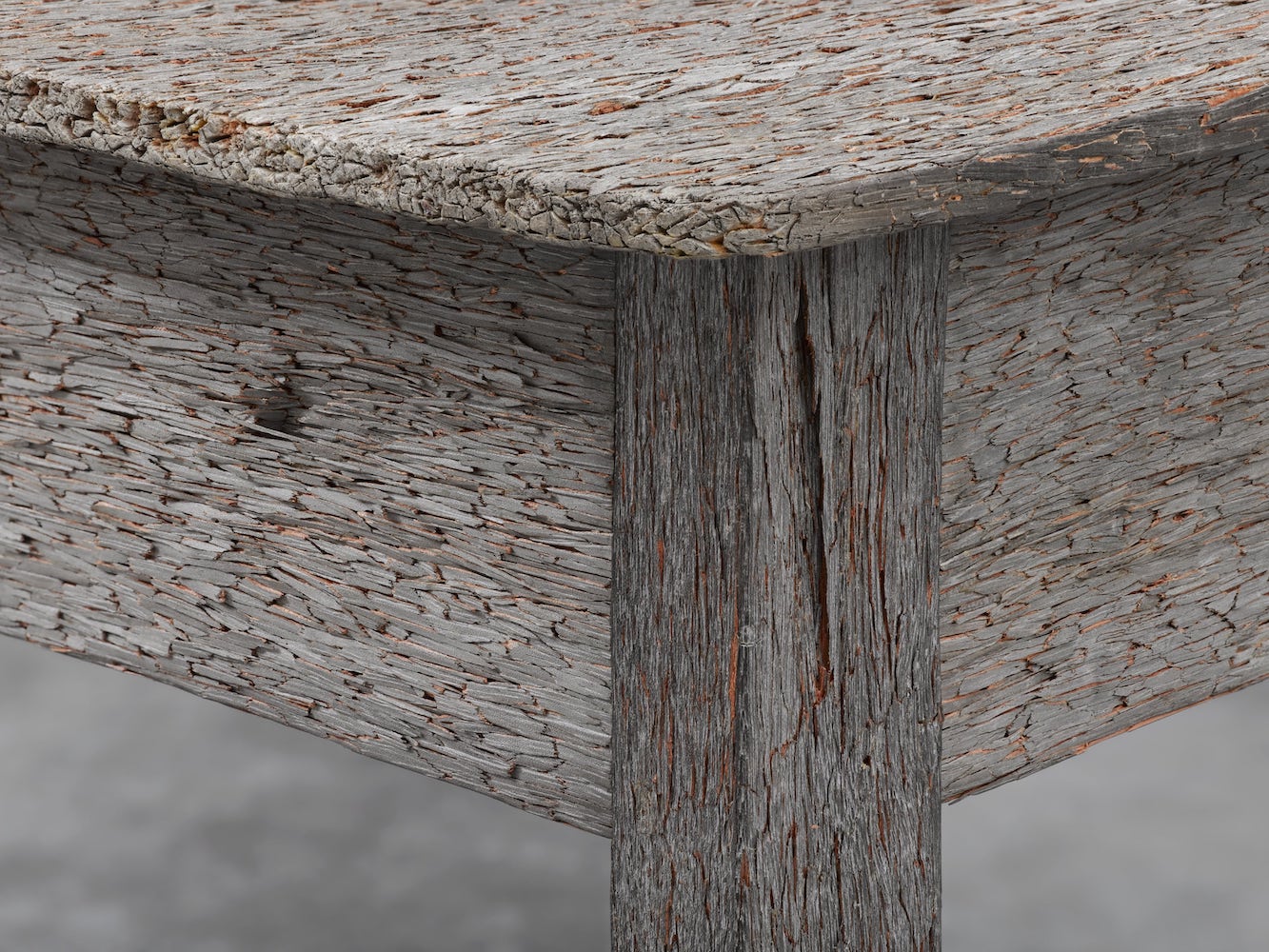
Doris Salcedo, “Tabula Rasa V,” 2018, wood, 31 15/16 x 47 3/8 x 25 1/4 inches, © the artist, photo © White Cube (Ollie Hammick).
WW: The role that you have in the world is unique because you’re expressing this moment, almost as a reflection of society. Do you feel a responsibility as an artist to communicate what is happening, or create works as a way of giving back to those wrongfully treated?
DS: Yes, a huge responsibility. Especially for a woman my age and coming from Colombia, it was unlikely to successfully present work all over the world. When I started working, that was completely unlikely. And yet it was an important goal to raise a voice from the Global South, because art gives dignity back to the society that is producing it. Thought gives dignity back. Colombia has no dignity because we aren’t considered human beings. We are at the level of drug dealers; that’s what we are. That’s how we’re treated when we cross borders and into the Global North. Despite the fact that the demand creates the market, we are left with the blame. And that blame gave us a sense of total indignity. It’s as if we aren’t able to produce poetry or art. I wanted to challenge that statement, which was so prevalent. The entire world is telling us that we are something. So raising that voice was essential.
And being in Sharjah, it was wonderful, because most of us had come from countries where their dignity had been taken away. We were producing work based on important issues of our times, and we were all talking, raising our voices, to the Global North. And I thought that was absolutely marvelous. Sharjah was like a dream that I had as a young artist, to feel collectively by all of us.
WW: Does making art feel like a political action?
DS: Yes and no. I like making art for art’s sake. I don’t consider myself an activist. I consider myself a sculptor. And if the sculpture is well done, then it will address issues that are important, and it will catch people’s attention and they might reflect on it. But it’s not a direct political action. I see it primarily as art. It will be calm. I’m not trying to indoctrinate anyone. I’m not trying to induce a specific reading of my work.
WW: In many of your works, you’ve re-created a sense of solitude—an emptiness that a loved one’s disappearance can create. It gives form to pain, trauma, loss. What originally led you to re-create this feeling?
DS: I think violence takes you to mourning, which is an essential aspect of war. It’s what war leaves us with. I have always read and analyzed mourning, and the consequences of war. One element that is common in every interview I’ve ever conducted with victims is they’re immensely alone. Nobody helps them. There is no help or solidarity, no empathy, and that’s why they’re victims. That’s why they can be victimized—and even two or three times—because there is that lack. The life you and I have supports us. Somebody made the shirt you’re wearing, somebody made the chair I’m sitting on, somebody made the food we’re eating, somebody made the room we’re inhabiting. There are so many hands helping to sustain life. For a lot of these victims, like migrants, all of these hands are taken away. You’re in the middle of the Mediterranean? That’s it. No hand will help you. There might be planes or helicopters watching you die. That happens all the time.
It is that solitude that authorizes the condition of the migrant and the condition of the victim. It’s solitude that allows all of these things to happen. They cannot negotiate. They cannot talk. There is no possibility of saying, “Look, I’m sorry” or, “Please spare my life.” Language is not even possible. That’s why solitude is so essential to my work.
New from the Doris Salcedo This Summer
WW: What are you working on this year or this summer?
DS: I’m preparing a retrospective at the Fondation Beyeler, and I’m just beginning research on a new project, and am beginning to interview former child soldiers—children who were recruited by force. I’ve been interviewing them for a couple of months now, although I’m just beginning. These interviews need to take place for at least one or two years to understand properly.
It’s hard to read, but I need to understand this subject. There are approximately four hundred thousand children recruited by armed organizations, and there’s not that much written about it besides some standard sociological research. No philosophical analysis, which is quite sad.
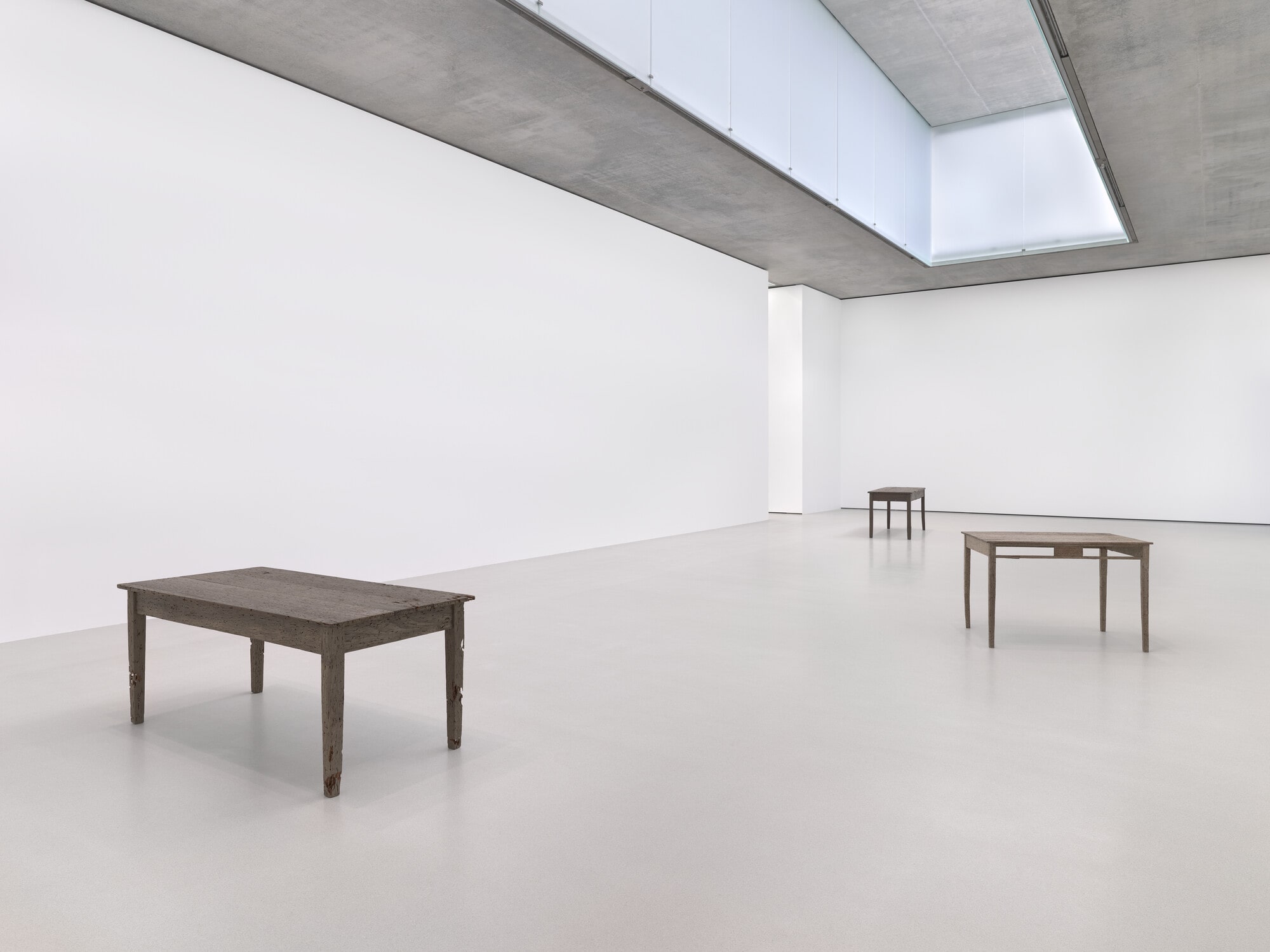
Doris Salcedo, “Tabula Rasa I,” 2018, wood, 32 1/16 x 77 3⁄8 x 29 1⁄8 inches; “Tabula Rasa II,” 2018, wood, 32 7⁄8 x 47 5⁄8 x 31 1⁄8 inches; “Tabula Rasa IV,” 2018, wood, 31 1⁄8 x 76 5⁄8 x 34 3⁄8 inches; © Doris Salcedo, courtesy of Glenstone Museum.
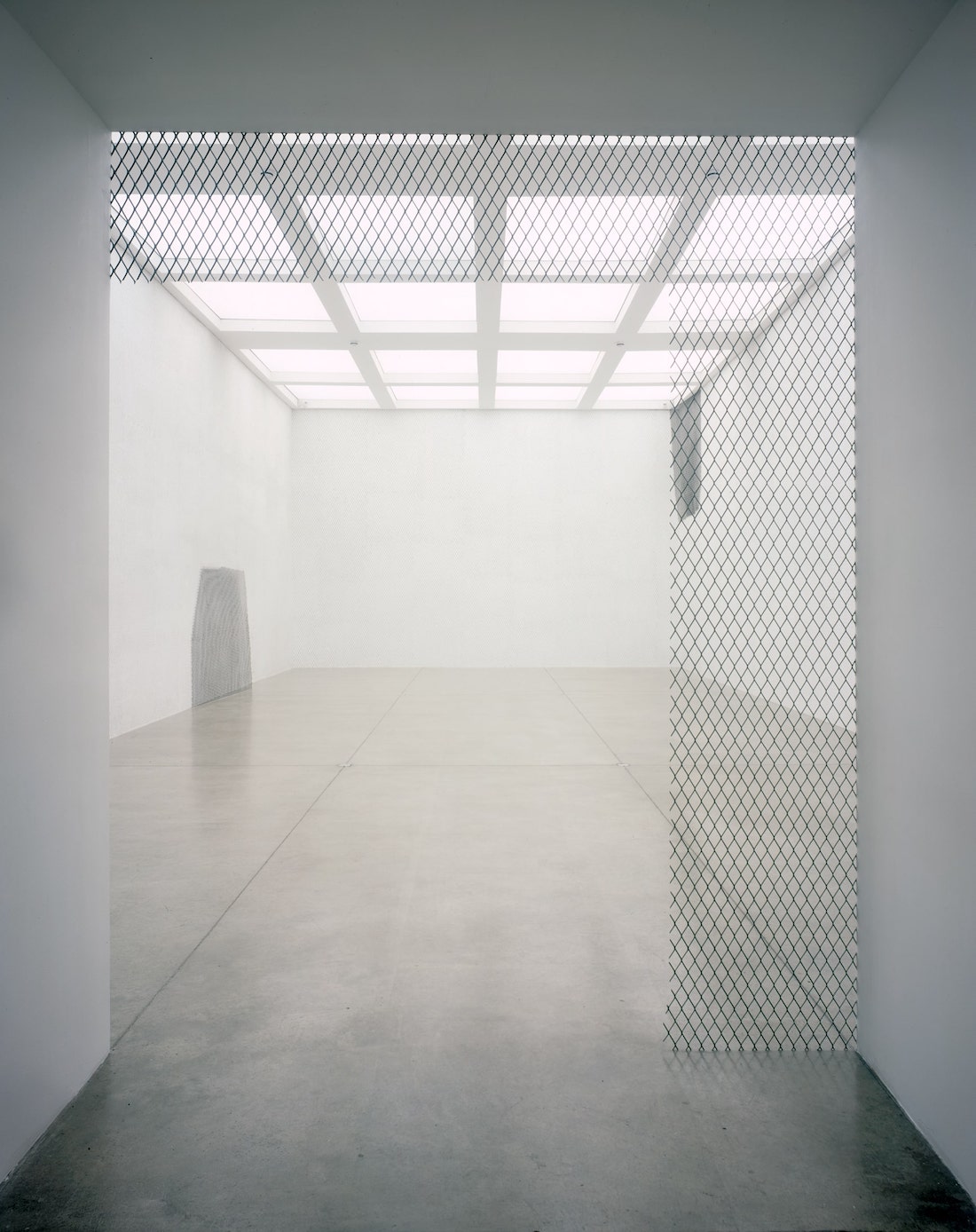
Doris Salcedo, “Neither,” 2004, plasterboard and steel, 193 12/16 x 290 3/16 x 588 4/16 inches, © the artist, photo © Stephen White, courtesy of White Cube.



